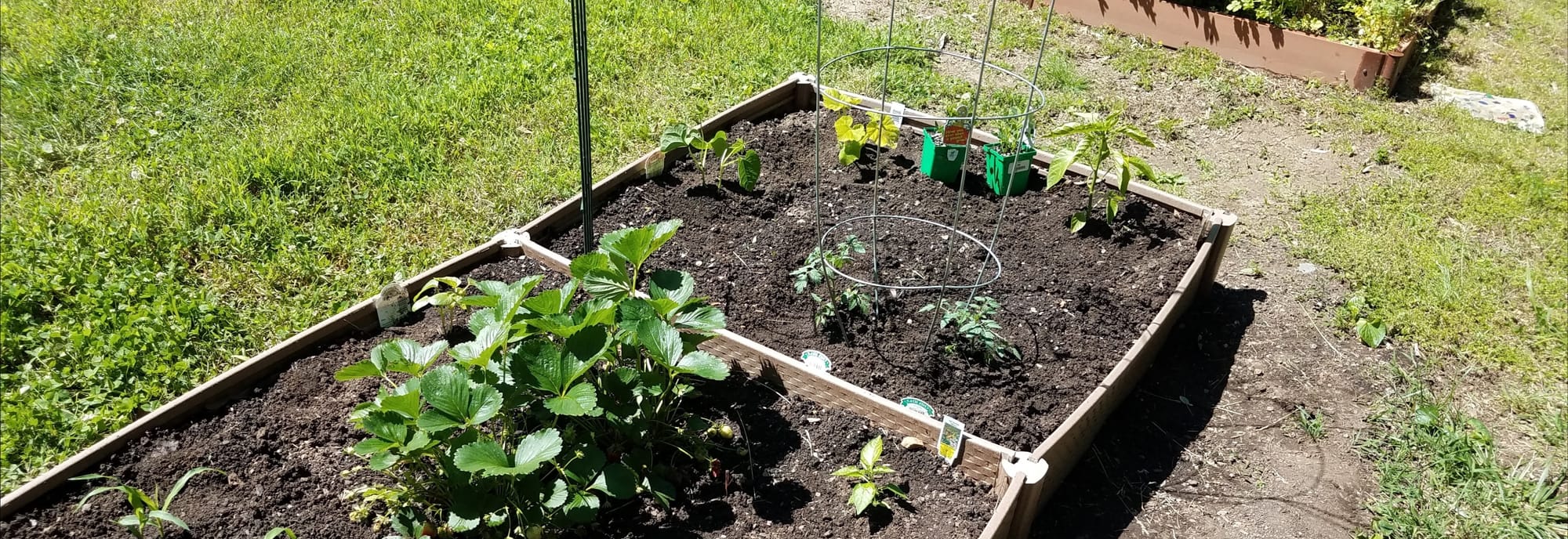A Sensitive Time
Those are things you must get used to in New England, learning to be a tough tomato.

It is a sensitive time right now waiting to see which plants will emerge and do well this season, and which will not. My attention is primarily on our tomato babies (as we have been calling them). We started a dozen from seed in the kitchen window in early spring and they showed good promise, poking out their little green arms early, and stretching to junior size over six weeks until it was time for outdoor acclimating. There were a few warm days but it stayed cool most of the time, and cloudy. Those are things you must get used to in New England, learning to be a tough tomato.
Out of a dozen, we have maybe two tough tomatoes. All of them have been full-time in their raised bed for a couple of weeks, and many are resisting—as in, what was the matter with the kitchen window? We are cold and wet and miss our window mates. We would rather be houseplants.
It is true, nights have been in the fifties. We woke up to the furnace running a few nights ago. Daytime temperatures have not climbed particularly high, thanks to ongoing cloud cover. We are still wearing sweaters in the evening if we are outside. (I am considering getting one now, and it is mid-afternoon.)
After our morning walk, Huckleberry and I stopped by the garden beds to check on things, beginning with the tomato babies. As I say, two of the dozen are forging ahead, getting on with it. They have set their roots, and are thrusting upwards, beginning to add tiny branches. I count seven others in various stages of denial. I am urging them to perk up. It may climb back into the eighties next week, which should help.
Sadly, if you are doing the math, three of our tomato babies have perished. I am concerned enough about the others that I may augment with plants from away to serve as encouragement.
Elsewhere, the green beans are making a good showing. Beans are fairly reliable. It is too soon to say with the onions and shallots. It has only been a little over a week. We are waiting for most of them to break through.
I have added additional rows of lettuce after a poor start a month ago. That will have been my fault: I was careless planting earlier rows, which may have been too deep.
Potatoes—russets and reds—are in, as of the same time as the onions. No sign of them yet. Carrots, which I sowed a couple of weeks ago, are making a break for it. Their wispy, green threads are just beginning to show. We had a bumper crop of carrots last year, harvesting them just ahead of mealtime up until the first hard frost. They are in a different bed, this year. We will see how they like the new digs.
It was the gladiolus that had us most concerned. I planted six to start with. Only one had emerged after a few weeks. I blamed myself. I planted them too deep, not deep enough, in the wrong spot, without enough light, in ground that was either too sandy or not sandy enough and drained poorly. They had been perfectly good bulbs going into the ground, full of hope, and packed with colorful possibilities. What had happened? Too shy maybe. By then, too weary. Who knows? But, at last, today, four more shoots have appeared in the places I put them, so we have five out of six accounted for, and I am mostly spared my guilt of being a lousy gardener.
Published June 18, 2024 in the Monadnock Ledger-Transcript

